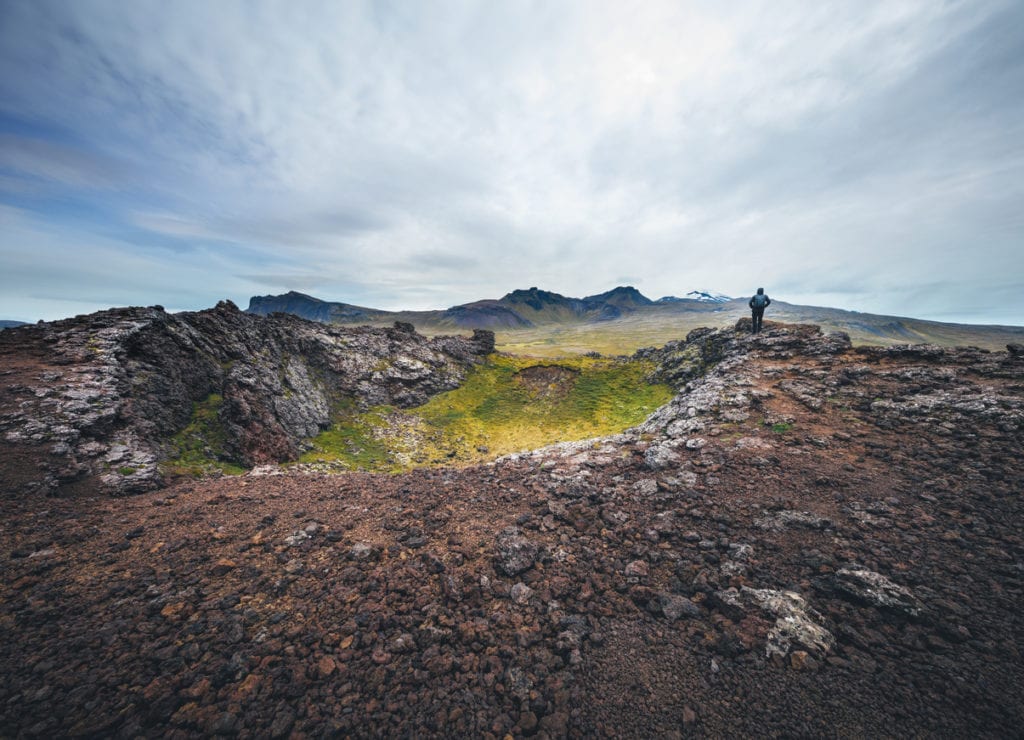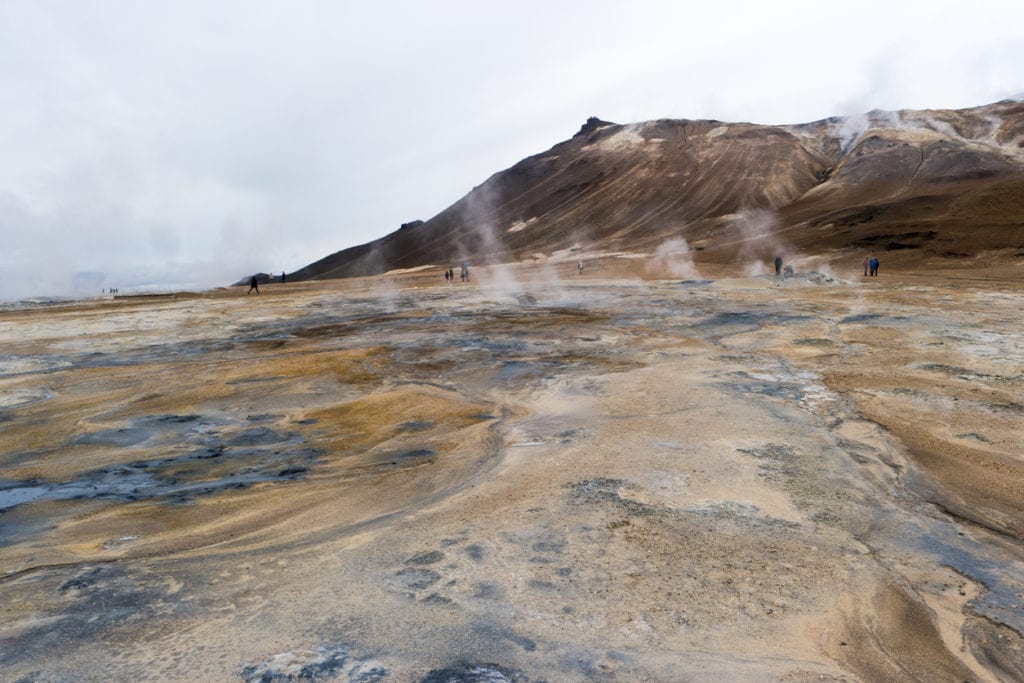Are you a traveler—not just another passenger on a cruise ship or one more harried office worker catching a few rays on weekends at the beach—but a real traveler? Do you dream about seeing and doing things very few before you have seen or done—scaling Kilimanjaro, seeing the majesty of Machu Picchu through the clouds, or viewing volcanic destinations?
No problem if the answer is no—after all, most people don’t choose Robert Frost’s “road not taken.” Most like to do what everyone else does. They worry about being too far from home or getting too far out of their comfort zones—and that’s OK.
However, for some, that’s not enough. They’re the ones who need to push past the horizon, see what the lion’s share of humanity only read about, increase their understanding of the planet they inhabit, go to new places and see new things.
Why Iceland?
These are the real travelers, and they’re in good company—Richard Byrd, Leif Erickson, Columbus, Marco Polo, Magellan, Lewis & Clark, Ernest Hemingway, and Mark Twain. What’s more, they’re the kind of intrepid travelers who journey every year to Iceland.
But why Iceland, this North Atlantic land of “fire and ice” and midnight sun a stone’s throw from the Arctic Circle? Why is it that more and more travelers are choosing Iceland for their next adventure? Indeed, why has the number of tourists visiting Iceland has now topped 2 million—about 6 times the country’s entire population (this according to the Icelandic Tourist Board). Why are they coming to Iceland from virtually every part of the world—from the U.S., to be sure but also from Great Britain, Germany, Canada, and France?
Well, the reasons hearty adventurers travel to Iceland are as varied as the travelers who go there. For some, the draw is seeing firsthand the northern lights, or the aurora borealis. For others, it’s the geothermal baths, or the Icelandic whales, or the glaciers. Further, for an increasing number, it’s this beautiful land’s wealth of volcanic activity.
A Sight Like No Other — And a Glimpse Into Earth’s Geological History
The volcanoes which dot the Icelandic landscape are, to begin, stunningly beautiful—perhaps their principal attraction. However, they’re also a living testament to the island’s formative history—a history the last chapter of which has yet to be written. Said differently, the volcanic activity which defined Iceland’s topography continues to this day, another reason so many travel to see it.
This is how Live Science described the volcanic destinations in Iceland shortly after the eruption of Eyjafjallajökull in 2010:
“The explosion of a volcano on the tiny island nation of Iceland late Saturday night is a part of the continuing process that created the spit of land in the middle of the North Atlantic Ocean. Iceland sits smack dab on the front lines of the battle between pieces of the Earth’s crust that move around and cause earthquakes and volcanoes as they slide past, under and over each other. The small European nation is situated on the Mid-Atlantic Ridge, a seam in the Earth’s surface under the North Atlantic Ocean where the Eurasian and North American plates slide apart.”
6 Volcanic Destinations You Don’t Want to Miss
Iceland might be small, but its volcanic life is anything but. The island nation contains no fewer that 32 volcanic systems and 130 volcanic mountains. This wealth of volcanic life on Iceland is one of the reasons tourism continues to soar, but it can also make it hard for visitors to pick the best ones to see.
That means you’ll need to do a little homework into the volcanoes before you leave home. To get you started, here are 6 of Iceland’s most intriguing and inspiring volcanic destinations (spoiler alert—it won’t count against you if you can’t pronounce some or all of them):
1. Doing Some Helpful Prep Work: The Volcano House
The fact that you like adventure doesn’t mean you don’t need to do some prep work. The more you know about where you’re going, the better the experience will be once you get there. That’s why so many volcano enthusiasts begin their Icelandic adventure at the Volcano House in the capital city of Reykjavik.
This repository of volcanic information near the old harbor might be small, but what’s inside most assuredly isn’t. You’ll learn everything you need to about Iceland’s volcanic systems and mountains, learn a lot about geological history and get the chance to put your hands on the wealth of volcanic rocks which call Reykjavik’s Volcano House their home.
2. The Eldheimar Museum
The Westman Islands (called Vestmannaeyjar in Icelandic) are a gorgeous archipelago on the southern coast of Iceland. Those islands, formed by underwater volcanic eruptions, are the only ones that are inhabited. Noted for their sheer beauty, they’re also the site of a massive volcanic eruption that occurred more than 45 years ago in 1973. That explosion dropped tons of ash and lava on more than four hundred buildings on the island of Heimaey, completely burying them (this is one of the reasons the area is now sometimes referred to as the “Pompeii of the North”).
Today, you can relive that event at the Eldheimar museum in the very town where the eruption happened. You’ll see many exhibits that memorialize what remains one of the worst natural disasters in Iceland’s history, including compelling stories about the ways in which that eruption changed the lives of Heimaey’s residents forever.
3. The “Gateway to Hell” Hvolsvöllur’s Lava Center
If you decide to visit Iceland, it’s important to see every part of the island. In particular, you don’t want to miss South Iceland. That’s where you’ll find Hvolsvöllur’s Lava Center, an unusual museum established just 2 years ago. Among other things, Mount Hekla is an active volcano referred to as “the gateway to hell” throughout medieval times.
The museum’s treatment of Icelandic geological history is both comprehensive and compelling. You’ll see stunning, interactive exhibits. These are complete with exciting depictions of earthquakes, volcanic eruptions, historic floods, and the treatment of geological activities which resulted in the country’s formation of the sea. Those exhibits are so exciting, in fact, that The Reykjavik Grapevine gave the Lava Center its most prestigious award last year: “Project of the Year”.
4. Snæfellsjökull National Park

Snæfellsjökull National Park is situated on the Snæfellsnes peninsula with volcanic destinations in West Iceland. At first glimpse, you’ll probably feel as if you just entered a time machine. The soaring heights, rugged crags, and glacial summit all figured into Jules Verne’s decision to make it the epicenter of his famous novel, Journey to the Center of the Earth. The park features guided tours to help with your explorations. You can see everything from black-pebbled beaches to hidden coves.
5. Reyjkavik’s “Inside the Volcano” Experience
If you like to explore beneath the surface, the “Inside the Volcano” tour in Reykjavik’s Thrihnukagigur volcano is for you. This tour will take you inside this dormant volcano as you’re dropped by cable. Some of the wonders include a magma chamber formed by an eruption.
6. Hverfell: The Largest Crater in Europe

The crater at Hverfell has been around for more than 2,500 years—that’s how long it’s been since the massive volcanic eruption that formed it—and that crater is just as massive at more than a full kilometer in diameter, making in the biggest crater in all of Europe. You’ll find Hverfell in the northern part of the country, famous for its rugged landscape and wealth of volcanic activity.
Find More Volcanic Destinations in Iceland
Iceland is rapidly taking its place as one of the go-to destinations for intrepid and rugged travelers. Adventurers from around the globe choose Iceland over more familiar destinations for a variety of reasons. Whether it’s the country’s awe-inspiring volcanic destinations, mountains, craters, or museums, you’re going to need a way to get there. In other words, before you set out on foot, you’re going to need a car.
That’s where we can help. When you’re on your own, you’ll want the reassurance of an experienced, reliable, and customer-friendly car rental company. You’re going to need 24/7 customer service, collision damage waivers, unlimited miles, and zero hidden feels. To learn more about the ways we can make your trip to Iceland both exciting and safe, visit our website today.
Back